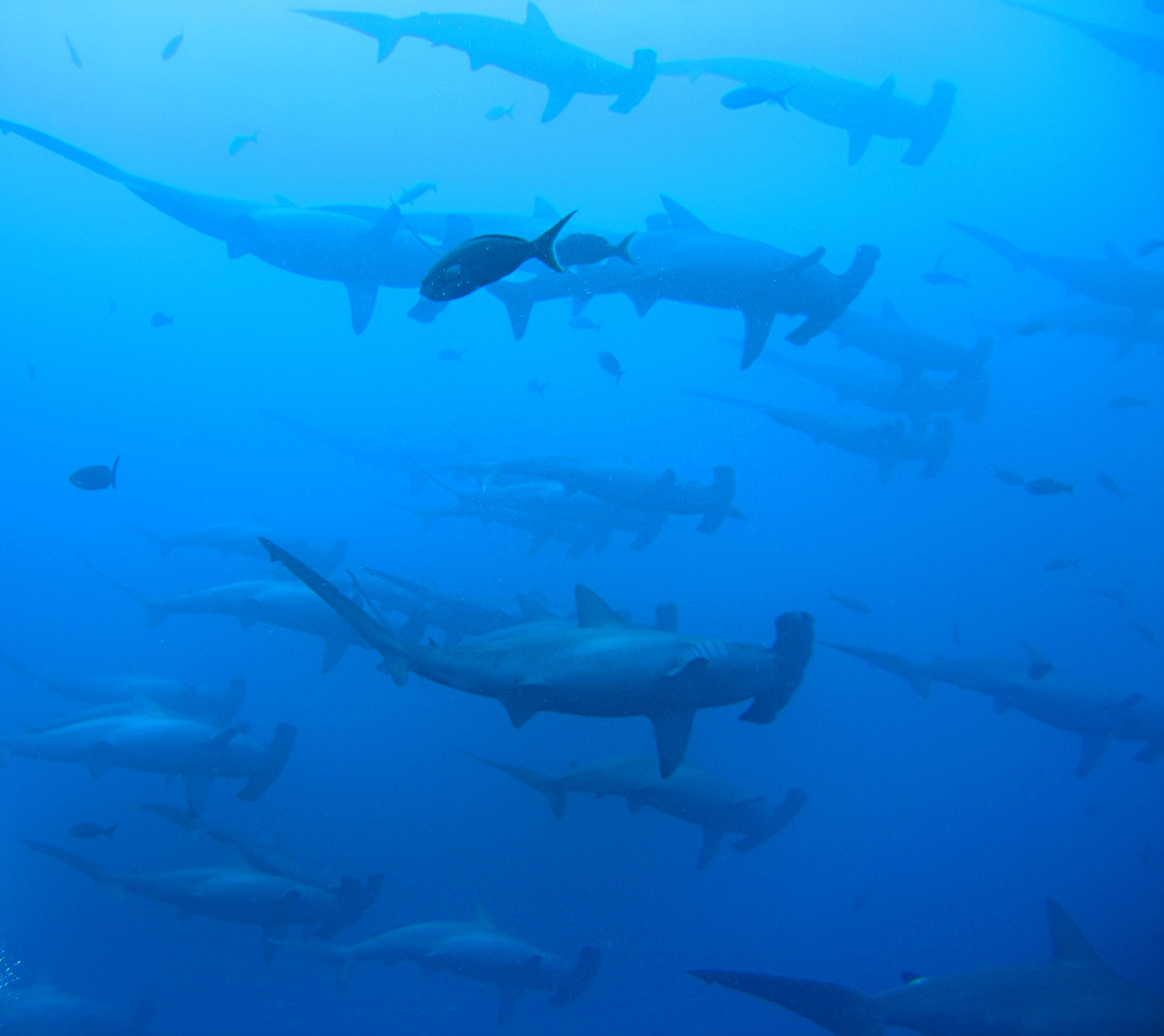
Baja’s Shark Super Highway
by Bryan Jauregui, Todos Santos Eco Adventures

Hammerheads in the Sea of Cortez by Kaia Thomson
When Dr. Peter Klimley, AKA Dr. Hammerhead, was studying the scalloped hammerheads of El Bajo seamount near La Paz in the late 1970s, he attached little compass sensors to some of the sharks and made an amazing discovery. “The sharks were swimming like we would drive a car down the highway, directly from one point to another.”
The sharks would leave El Bajo seamount, go out for 10 miles or more in the middle of the night, and return in the morning with no problem at all. How could they do that? Two things. Firstly, the Gulf of California is filled with magnetic fields of lava flows around seamounts, and the sharks use the magnetic fields to navigate, like following neon signs along the highway. Secondly, the whacky shape of the hammerhead’s head means that the shark’s sensors, known as ampullae of Lorenzini, are spaced widely apart over a larger surface so the sharks can better detect variations in the magnetic field, reading the lava flows as clearly as a white line down the highway.
The result, demonstrated by Klimley and published by National Geographic, is that hammerheads are using seamounts alike El Bajo as hook-up joints along established migration routes. Interestingly, the vast majority of the sharks gathering at the seamounts are female, and Klimley found that they are fighting each other to establish dominance as the males prefer to mate with the strongest females. 400 million years of evolution at your service ma’am!
